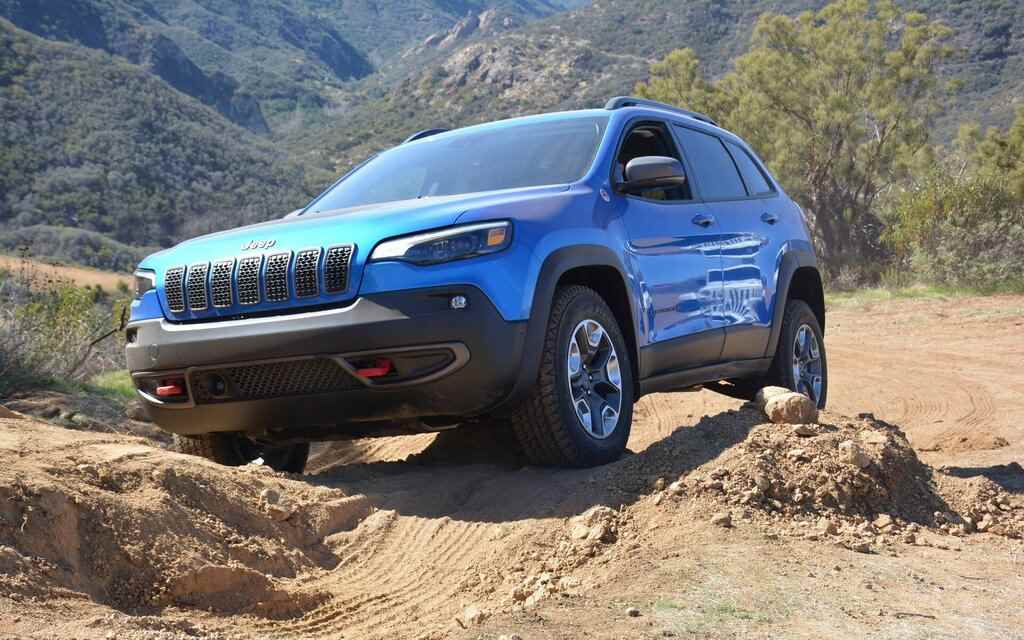The Jeep Cherokee is one of the oldest compact SUVs on the market, its current generation dating from the 2014 model year. However, it continues to stand out with its good off-road capabilities, especially in Trailhawk version, and its naturally aspirated V6 3.2-liter engine – a rarity in the class – that can tow loads of up to 4,500 pounds.
The mystery still hangs over the arrival of a new generation. Some rumors point to the middle of the decade, which is still a long way off. In short, if you’re considering a used Jeep Cherokee, it won’t go out of style overnight.
Now, what about its weaknesses and things to look out for before deciding to buy one? We’ll dwell on that here, but before we go any further, know that the most significant update to the Cherokee is for the 2019 model year. You’ll easily recognize it by its more conventional front with sleeker headlights. .
Photo: William Clavey
Limited space
The biggest weak point of this compact SUV is undoubtedly its interior volume, which is less generous than that of the competition. Rear-seat clearance is disappointing, as is cargo space, handicapped by a much too high trunk sill. Not ideal for the family, always in comparison with the competition.
At the front, the overabundance of plastic elements and the layout of the controls leave something to be desired. In addition, the thickness of the windshield pillars compromises visibility on the road.

Photo: William Clavey
Three Mechanics, One True Choice
The Jeep Cherokee has the advantage of offering several mechanics, but only one really stands out. The little 2.4-liter four-cylinder that develops around 180 horsepower has long proven insufficient and grumpy under the hood of the Cherokee. It’s only suitable if you’re not the type to get home in a hurry or if fuel economy matters to you more than anything.
The second option is the 3.2-liter Pentastar V6 (271 horsepower) mentioned in the introduction. It has proven itself and delivers a yield of great smoothness. Obviously, this engine has a bigger appetite than the four-cylinder, but you can maintain an average fuel consumption of around 11 L/100 km.

Photo: William Clavey
Since 2019, there is also a 2-liter four-cylinder turbocharged engine (270 horsepower). However, it turns out to be noisy and not as reliable as the V6, requires the best fuel possible and certainly costs more to maintain and repair in the event of a breakdown. It’s a risky choice, especially since it offers no real advantage over the V6.
Satisfied owners
The Jeep Cherokee owners we talk to are generally happy with their vehicle. Of course, the gearbox problems of the 2014-2015 models were serious. However, if you lean towards a recent copy, the question of reliability does not arise so much.

Photo: William Clavey
Last important point to mention: the Cherokee is one of the 10 vehicles with a long list of recalls that we presented to you two years ago. There are about thirty of them in Canada, imagine! It is therefore important to ensure that the fixes recommended by Jeep have all been carried out before buying and, of course, that the mechanical inspection does not reveal any major problem.
